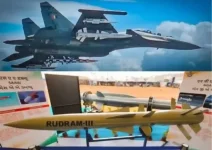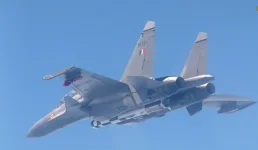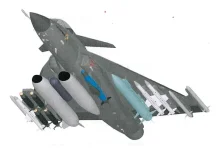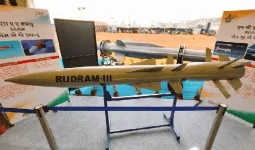- Views: 2K
- Replies: 17

The Defence Research and Development Organisation (DRDO), in collaboration with Hindustan Aeronautics Limited (HAL) and the Aircraft and Systems Testing Establishment (ASTE), is gearing up for further trials of the Rudram-II air-to-ground missile in 2025. This next phase of testing will focus on integrating the missile with the Mirage-2000-5 fighter jet, expanding its compatibility beyond the Su-30MKI.
The Rudram-II, weighing 800 kilograms and carrying a 200-kilogram warhead, is a potent weapon designed to neutralize enemy radars and communication systems. The Indian Air Force (IAF) is keen to integrate this missile across its diverse fleet, enhancing its operational versatility and strike capabilities.
The integration process will involve captive and release flight trials scheduled for next year, followed by firing trials expected by the end of 2025, contingent on the success of preliminary tests. An IAF official highlighted the missile's versatile launch capabilities, allowing deployment from various altitudes and targeting enemy assets over 100 km away.
The IAF also plans to equip the Tejas Mk2 with the Rudram-II missile when the aircraft enters service, expected around 2030. This expanded compatibility across multiple fighter platforms will significantly enhance the IAF's ability to suppress enemy defences and command and control systems, giving it a decisive edge in combat scenarios.
Key Features of Rudram-II
- Lock-On-Before/After-Launch Systems: These advanced systems provide flexibility in targeting, allowing the missile to adapt to dynamic battlefield conditions.
- Internal Guidance System: Once launched, the missile can autonomously navigate to its target, ensuring precision strikes.
- Extended Range: The missile's effective range of 50 km to 300 km makes it a formidable weapon in long-range engagements.




